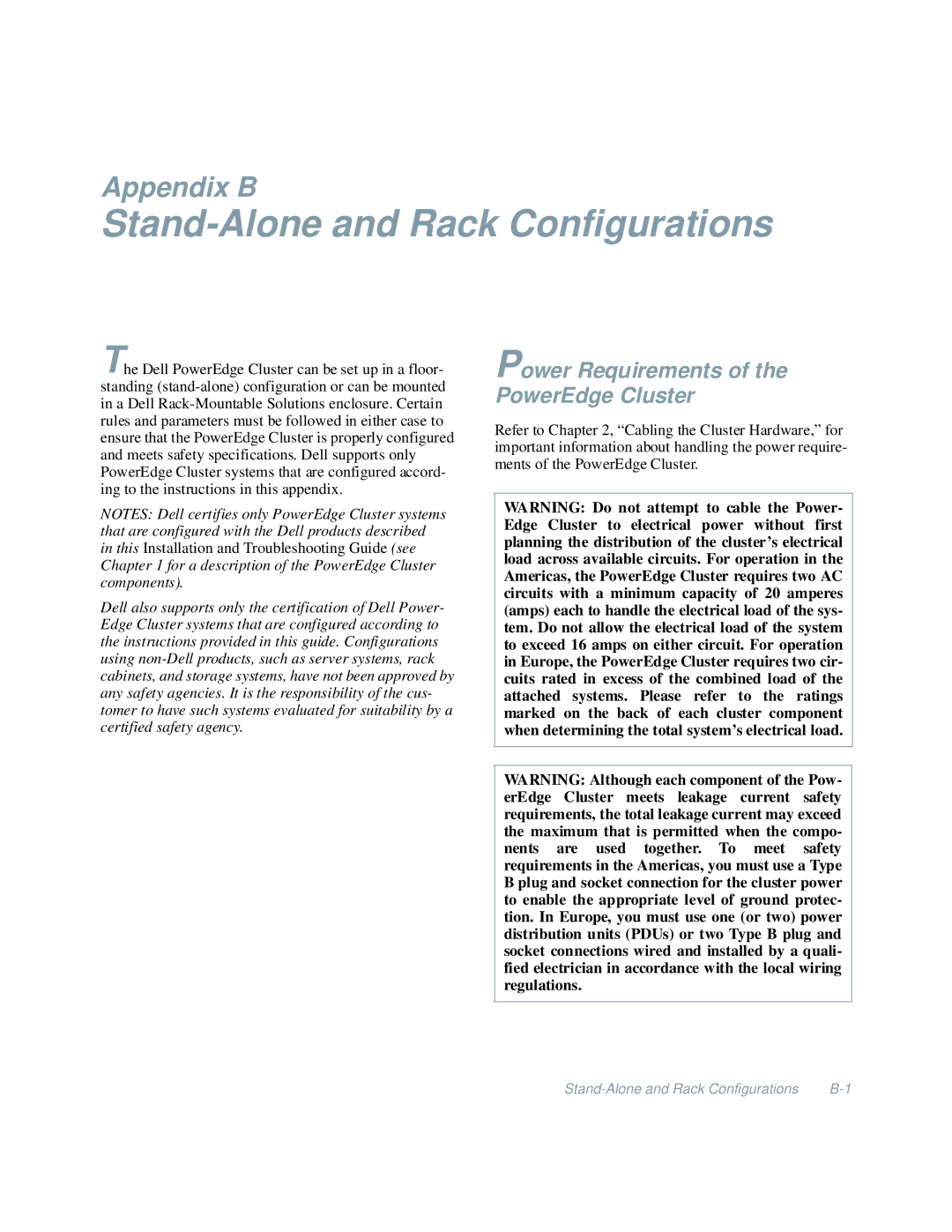
Appendix B
Stand-Alone and Rack Configurations
The Dell PowerEdge Cluster can be set up in a floor- standing
NOTES: Dell certifies only PowerEdge Cluster systems that are configured with the Dell products described in this Installation and Troubleshooting Guide (see Chapter 1 for a description of the PowerEdge Cluster components).
Dell also supports only the certification of Dell Power- Edge Cluster systems that are configured according to the instructions provided in this guide. Configurations using
Power Requirements of the PowerEdge Cluster
Refer to Chapter 2, “Cabling the Cluster Hardware,” for important information about handling the power require- ments of the PowerEdge Cluster.
WARNING: Do not attempt to cable the Power- Edge Cluster to electrical power without first planning the distribution of the cluster’s electrical load across available circuits. For operation in the Americas, the PowerEdge Cluster requires two AC circuits with a minimum capacity of 20 amperes (amps) each to handle the electrical load of the sys- tem. Do not allow the electrical load of the system to exceed 16 amps on either circuit. For operation in Europe, the PowerEdge Cluster requires two cir- cuits rated in excess of the combined load of the attached systems. Please refer to the ratings marked on the back of each cluster component when determining the total system’s electrical load.
WARNING: Although each component of the Pow- erEdge Cluster meets leakage current safety requirements, the total leakage current may exceed the maximum that is permitted when the compo- nents are used together. To meet safety requirements in the Americas, you must use a Type B plug and socket connection for the cluster power to enable the appropriate level of ground protec- tion. In Europe, you must use one (or two) power distribution units (PDUs) or two Type B plug and socket connections wired and installed by a quali- fied electrician in accordance with the local wiring regulations.
